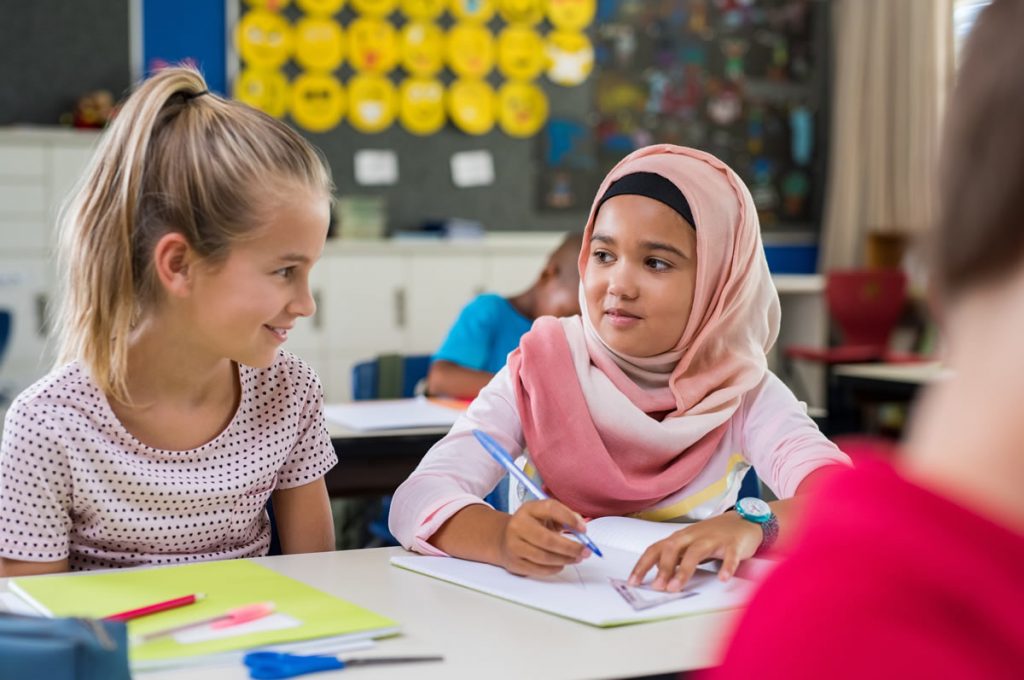Children’s identity and self-respect are very directly related to the way they are treated by others. Therefore, both home parents and educators must always promote a safe and humane environment in which inclusion , fairness, and appreciation of individual differences are evident. For example, when an adult is respectful of others, regardless of their gender, social class, race, nationality, religion, disability or cultural background…, without a doubt, children will follow that very important and invaluable example in their lives.
Ideas for working on diversity with children
- Organize workshops or learning sessions that address diversity or sensitivity to racial and cultural differences. For example, if you are going to do it at school, feel free to invite members of the community who represent diverse groups and who can speak to the little ones about their customs and traditions.
- Develop posters with ideas and concepts that reflect diversity, such as: each child is unique and has their value; all children must be treated with respect and care ; every child can learn; we all have the responsibility to fight against prejudices and injustices; our school is a quiet place where intolerance is not tolerated … The idea is that children internalize these ideas so that they carry them out and keep them present in their lives.
- Have the children write an article about another culture. If you think they don’t have enough notions to do it, look for a children’s movie that deals with the subject and have them, after viewing, write what they think they understand is diversity and its importance.
- It provides a safe and consistent environment at home and in the classroom , where children’s strengths are emphasized and their differences are respected. Establish a climate in which children feel free to share their thoughts and feelings. It also teaches each child to defend himself and to defend the rights of others.
- Use multiethnic, culturally sensitive materials, curricula, and textbooks whenever possible. When this cannot be accomplished (for example, when an ancient history book has to be used), ask the children in what way these contents present an unfair or unequal view of our days.
- Engage children in activities that uncover discrimination, examine diverse points of view, increase sensitivity to others, and improve their thinking skills.
- Do fun activities, such as dividing all the children with birthdays from January to June and having them sit on one side of the room, and having those with birthdays from July to December sit on the other side (this is a nice way to work on diversity so that its concept is understood). Then for one day, try giving a group of children special treatment and the next day the next. You can ask the children how they felt, feeling different , and have them write down their experiences during the process.
- Have the students close their eyes and imagine a homeless person for a moment. Then ask them to open their eyes and write a description of that person or write down how they think they might feel in their day-to-day life. This exercise can be very useful to do with various groups: a nurse, a doctor, a rock star, a scientist, etc. Another interesting idea may be to discuss and work on the possible stereotypes that each group has associated with.
- Discuss the problem-solving skills necessary for children to get along . Some examples are: never make fun of a child’s comments or the way they look or speak; show respect and listen to each other; let everyone have a turn to speak; find a solution when you have a problem with another person … etc.

- Organize a poster contest that represents the importance of diversity and the commitment that is expected of us in life with respect to it. For example: we must live together in harmony; we are all the same but different; diversity enriches culture … You can establish prizes or categories for the best posters.
- Have children discuss central historical themes that help them understand how people’s rights can sometimes be “violated” or the richness of diversity misunderstood. For example, go to a Holocaust exhibition, a shelter for homeless people or refugee children, a prison … If possible, you can also organize a writing activity and exchange of letters with groups of this type, which will serve children to understand their situation and put themselves in their place for a moment .
- Read biographies on leaders of ethnic groups or on racial issues. Rosa Parks can be an excellent example. To raise awareness about diversity issues, and for greater communication, group book readings (eg Anne Frank) or theater performances can also be organized.
- Celebrate diversity by inviting parents and others who represent different cultural groups. It can be with a simple party, end of year or term, in which music from different cultures is played and dishes from different cuisines are exchanged and tasted . Everything can be accompanied by explanatory talks and posters.












































































































